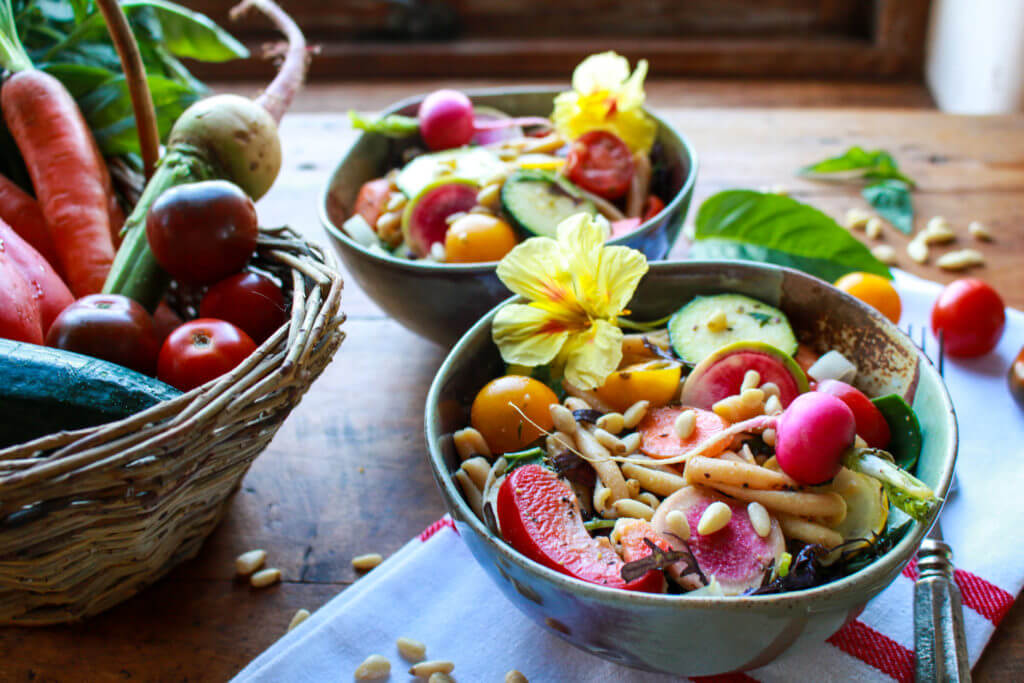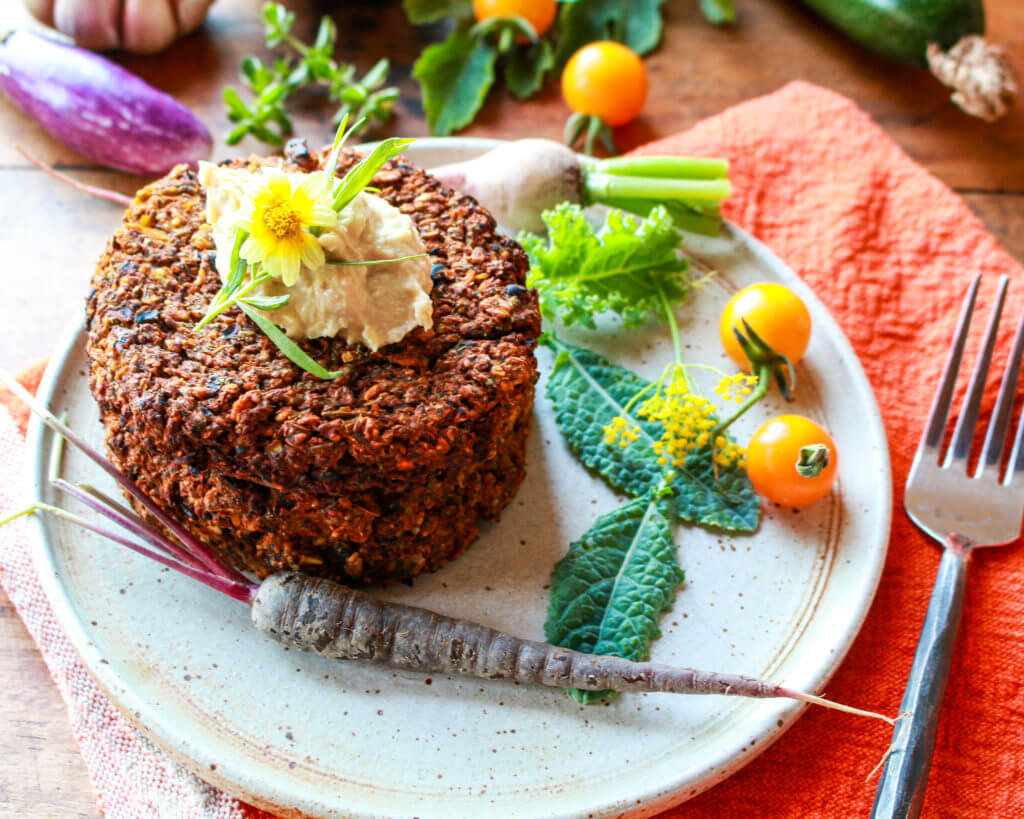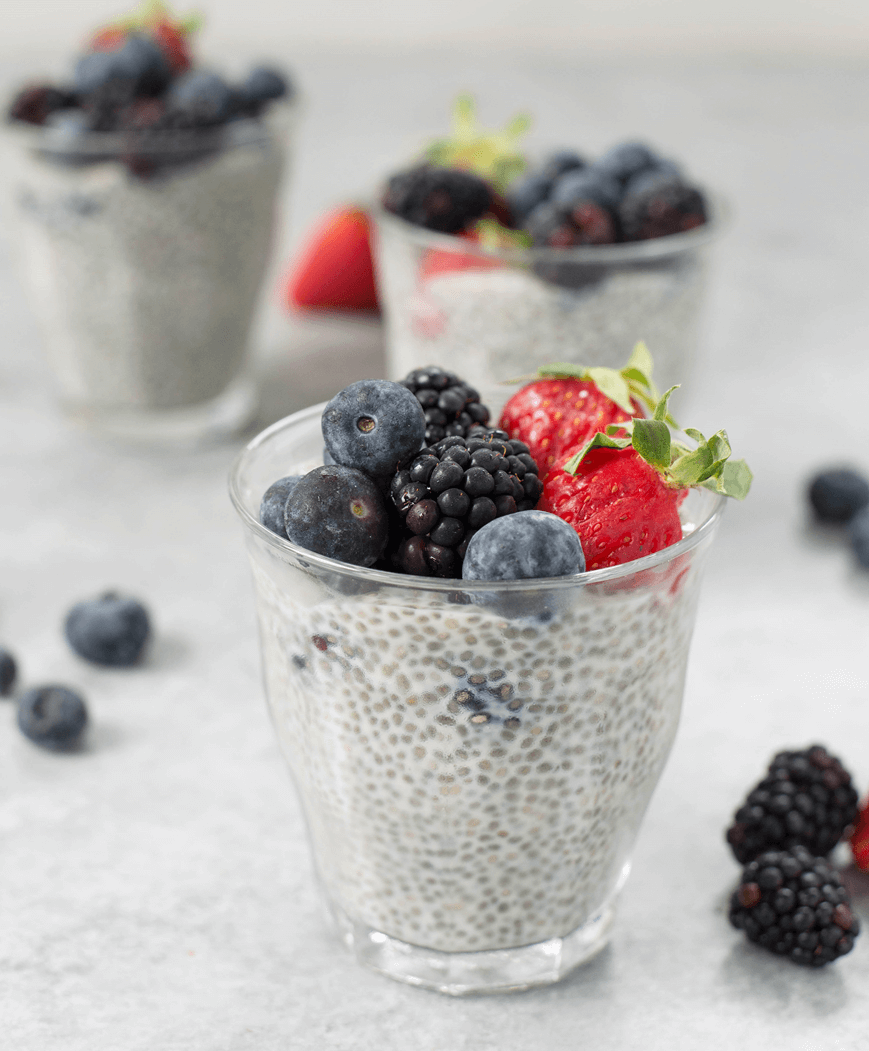How Does Diet Impact the Environment?

Learn about the impact your diet choices can have on the environment in this Q&A with food sustainability expert Sharon Palmer, The Plant-Powered Dietitian.
Does what you put on your plate every day really impact the environment? The answer is yes! In fact, your diet choices may be the most impactful thing you can do to reduce your eco-footprint over your entire lifetime. Research has shown that making positive changes, such as adopting a more plant-based diet, has many positive impacts for, not only your health, but the environment as well. It’s important to understand how your food choices can contribute to negative effects on the environment, whether it’s increasing greenhouse gas emissions, water use, deforestation, or pollution. So, I’m here to answer some of your top questions you are just itching to know more about when it comes to diet and sustainability.
When it comes to diet patterns, there are several that you can options, such as vegetarian, vegan, flexitarian, pescatarian, Paleo, Mediterranean, and omnivore. But which diet is best for the environment? Scientific evidence consistently supports consuming a plant-based diet to reduce greenhouse gas emissions, carbon footprint, water footprint, and pollution. In fact, the research shows that the more plant-based the diet the better. Vegans get the highest marks in terms of low environmental footprint, however other low-animal food diets also score well. Read on to learn more about how your food choices can make a huge impact on planetary health.
How Does Diet Impact the Environment?

Question: How much do our food choices impact the environment, and why do you think it’s important we become aware of this?
Sharon’s Answer:
Research has shown that diet has the greatest impact on the environment that an individual can make over their lifetime—even greater than the type of car they drive. It is important to be aware of this, because if we all collectively change our diets, we can make a significant impact on the environment and stay within our planetary boundaries—the boundaries within which we must live in order to survive on Earth. Just by doing a few key things like eating more plant-based, reducing red meat consumption, eating less highly processed foods and beverages, eating more local, seasonal produce, and reducing food waste can cut GHGEs (greenhouse gas emissions) by more than one-third, according to studies. It is going to take significant collaboration for us as a planet to stay within the planetary boundaries in order to ensure our survival and the survival of our beautiful ecosystems on this planet.

Question: What about the idea of beef vs. beans?
Sharon’s Answer:
Beef has the highest environmental impact among foods in our diets—ruminants overall, such as cows, sheep and lamb, produce a lot of methane which is a potent GHG. But we don’t eat as much sheep and lamb in this country, so beef takes a big toll, producing GHGs, and responsible for high levels of eutrophication, deforestation, pesticide use (to grow crops as feed), energy use, and water use. Beans are the most sustainable protein choice, as they produce an efficient amount of protein with low GHGes, energy, water, and land use. You could make a huge impact by switching from beef to beans—studies have shown that legumes result in one-fortieth the amount of GHGs as beef, plus it would free up 42% of cropland for agriculture by switching from beef to beans. Another factor is that we grow food to feed cattle, which is an inefficient way to produce protein—we could just grow crops (i.e. legumes) and eat those directly.

Question: What is the most sustainable: dairy milk or plant milk?
Sharon’s Answer:
Studies have shown that many plant milks have a lower impact on GHGe, land use, and water use, for example. Different types of plant milks have a lower impact, such as oat and soy have a lower impact on GHGe and water, while nut milks have a lower impact on GHGe, but not water (they take more water).

Question: What’s greener–soy milk or almond milk?
Sharon’s Answer:
Soy has a very low impact on emissions, land, and water use compared to dairy; compared to almond milk it is lower in water, but a bit higher in GHGe.

Question: What’s better for the environment, white bread or whole grain bread?
Sharon’s Answer:
I am not aware of a direct comparison in the research. However, any time a food undergoes more processing it generally increases its environmental footprint. There is more energy required in processing and distributing the ingredients, and there could be loss in the end product (i.e., some of the original product is lost to processing). When wheat is refined, it undergoes more milling, which requires more energy. The bran and germ are removed, but those are generally reused in other products, so they are not wasted. In addition, sustainability also encompasses human health. It is not sustainable to produce foods that don’t contribute to human health. We know that highly refined foods do not contribute to human health and even increases risks of chronic diseases.

Question: What is more sustainable, fish or lentils?
Sharon’s Answer: Lentils are within the legume family so many of the studies showing better sustainability benefits of beans or pulses include lentils. When it comes to fish, people think it is so healthy, but farm-raised fish can have a fairly negative environmental impact, as it requires food, and farmed fish are eating more than their weight in food over their lifetime. So, you have all of the impacts of producing that food, transporting it to the fish, caring for the fish, and processing them. In addition, some farmed fishing systems have produced pollution—there are bad actors (i.e., tilapia from China is on the “avoid” list by Monterrey Bay Aquarium’s Seafood Watch). There is work going on though in environmental stewardship of aquaculture practices to correct bad practices. It’s important that people choose fish that are responsibly produced—check out Seafood Watch for ratings.
Check out the other nutrition questions I’m answering at The Plant-Powered Dietitian:
How to Prepare Dried Beans to Avoid Antinutrients
How Can I Choose Sustainable Foods?
Does Roasting Veggies Ruin Nutrients?
Is “clean eating” a healthy lifestyle?
Image: Farmers Market Pasta Salad, Sharon Palmer, MSFS, RDN


